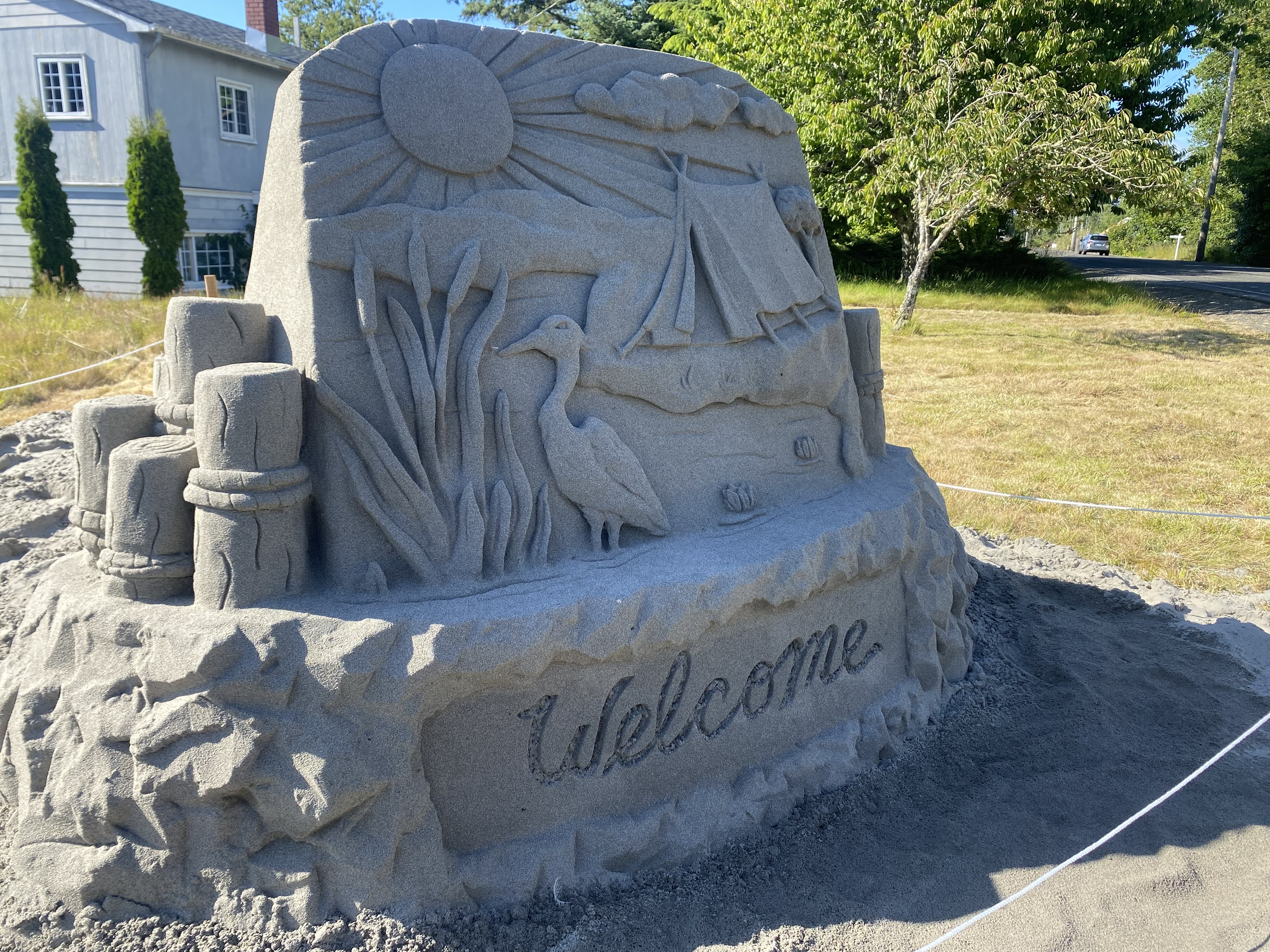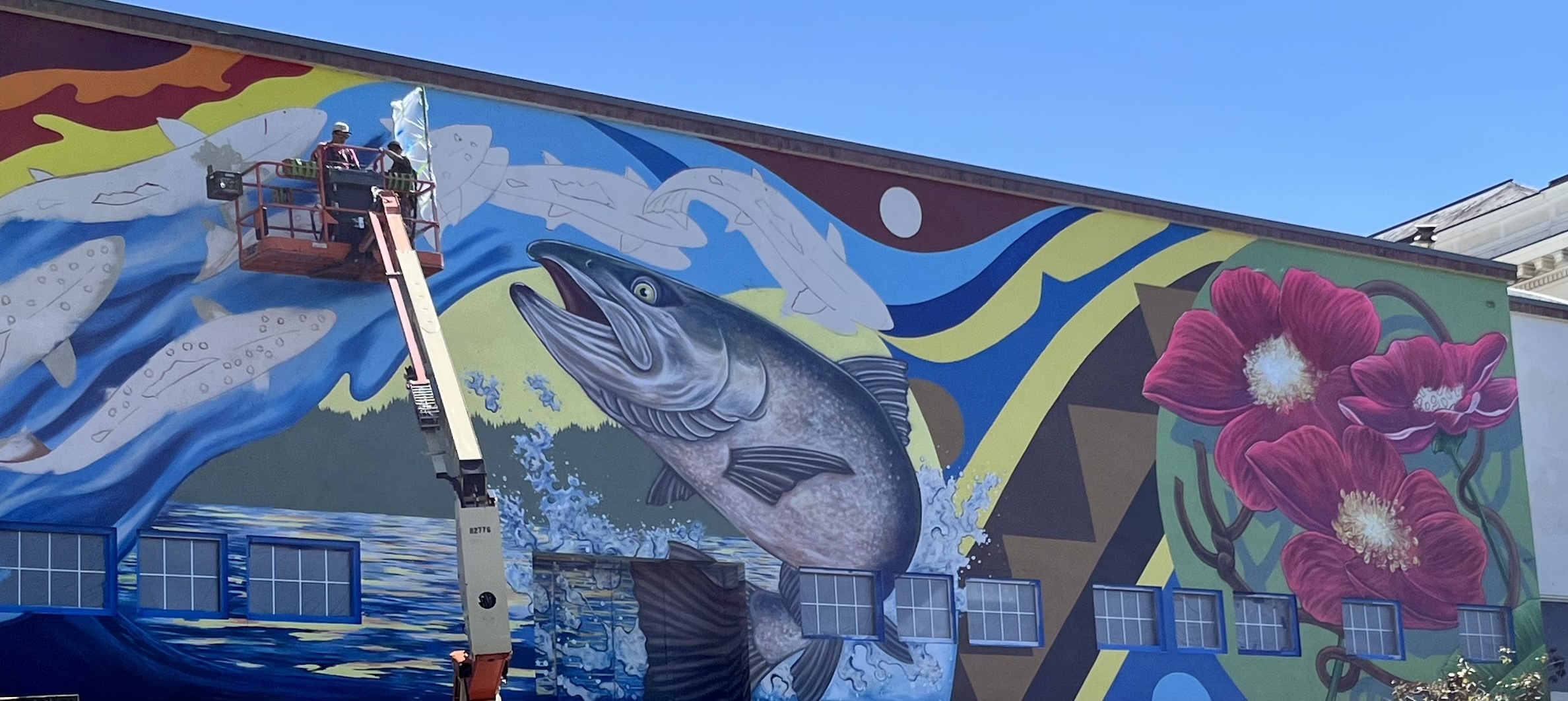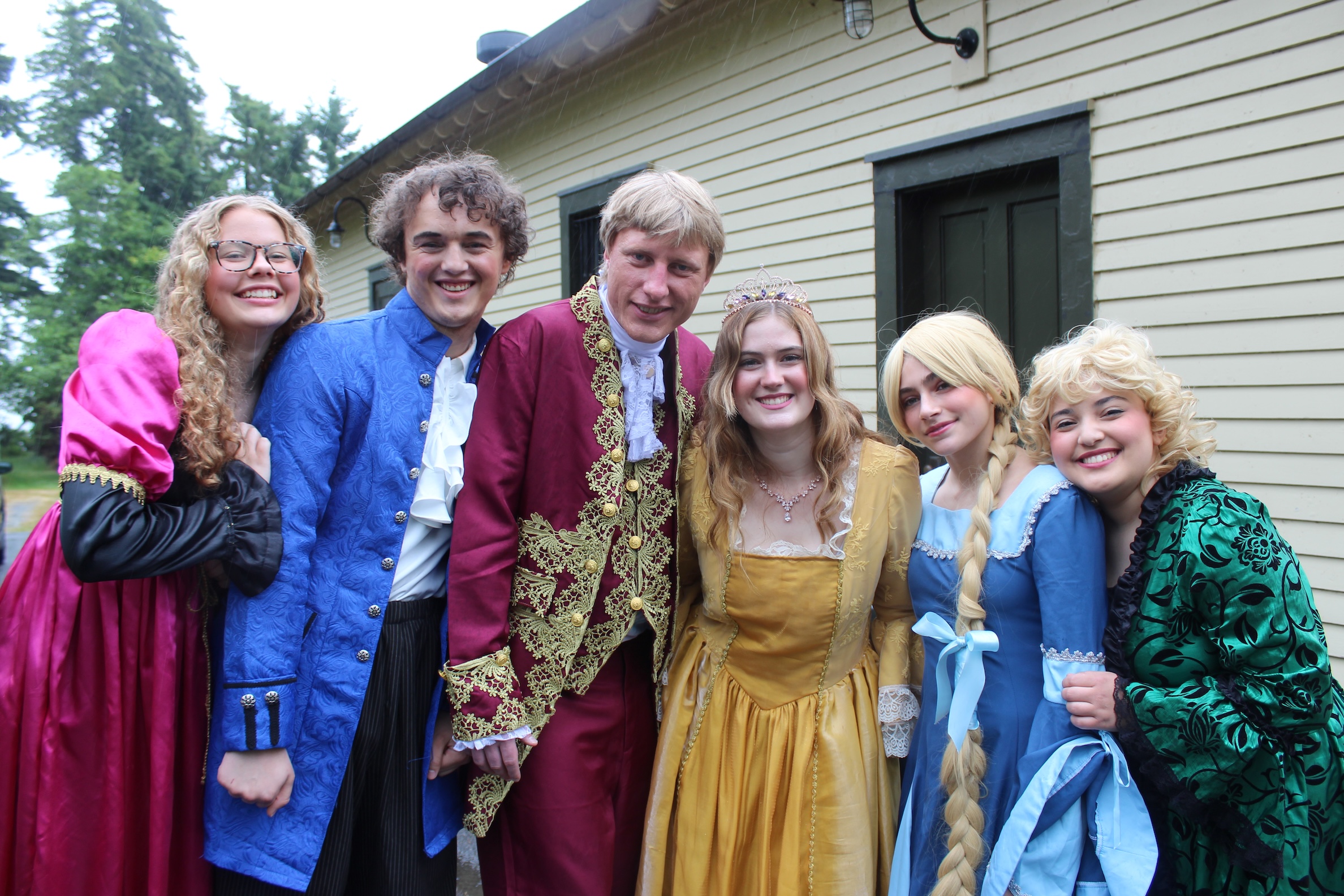Clearly artistic
Published 1:40 am Thursday, December 17, 2009

- John Cook's glass studio and gallery in Gearhart is home to live glassblowing. Submitted photo.
I’m a big fan of glass art. Just recently, my wife and I spent several days in Poulsbo, Wash., at the annual Art in the Woods, where you visit artists’ studios. Not surprisingly, we came away with glass – in this case, a neon crab, a very cool addition to our coastal home. It struck me that one of the reasons I like glass art is its myriad forms: glass blowing, stained glass, etched, fused, neon, painting with glass particles, mosaic; the list is one of invention in form.
Trending
We don’t think about it much because it’s so common today, but glass was once very precious. In fact, in the Bible, it has been compared to gold. (Revelation 21:18, 21)
When glass first appeared on the scene is really a mystery, but pieces of well-made glass have been found that date back to the third millennium BC, and in my book, that can be classified as old. The early Egyptians used a method by which they wrapped molten glass around a mold of clay and dung and shaped it by rolling it on a smooth surface. It wasn’t until the first century BC that glass blowing came about, and as one might expect, it revolutionized the art. By blowing through a hollow tube, an experienced glass blower can create intricate and symmetrical shapes.
Fortunately, we have a number of fine glass artists right in the neighborhood, so I decided to conduct my own studio tour and ferret them out.
Trending
My jaunt started down south in Manzanita, to a private studio where Roger Crosta and his son Trevor work in a process called “scavo.” Crosta does something that can make other glass artists cringe: He blows a perfectly good piece of glass art, rolls it in various frits, shards and powders, and using a special torch makes it look ancient and misshapen. Scavo is an Italian technique meaning “unearthed.” Crosta put it this way: “I like that ancient, dug-up look.”
Crosta was originally a designer and contractor building expensive vacation homes, but a visit to a glass blower changed all that. He built a couple more houses and then surrendered to his desire to create glass art. At first he crafted traditional art, but then he ran across a recipe for scavo, tried it and found a challenging new direction. He explained, “Scavo makes everything different. The result is rough but the process delicate. … I use few tools, I like to swing the glass to get unique shapes.” Under these conditions, you are certainly going to get one-of-a-kind art.
Stained glass by Debbie Patana of Inspirations in Chinook, Wash. Traveling farther north to Cannon Beach, I found Icefire Glassworks and artist owners James Kingwell and Suzanne Kindland. Kingwell was educated as a potter, but then, as he explained, he discovered glass blowing. “I had an image of myself making coffee mugs and plates all my life, but while experimenting with glass, I realized it offered no reason for boredom. It is physically and mentally challenging and I became a student for life.” Self-trained as a glass artist, he worked originally in a palette of clear glass in basically six tones of grey. It was when he met Kindland, who uses a wide variety of color, that he began to introduce color into his work. He uses classic, simple forms and his colors now run the gamut from the serene blues and greens of his “Northern Lights” pieces to the electric vigor of his “Bad Hair Day” series.
This glassy pumpkin patch grows at Fernhill Glass in Astoria. Kindland began blowing glass in 1993 and draws her inspiration from nature. She is inspired by simple walks in the woods, and that inspiration is reflected in much of her work, such as her “Autumn Leaves” series. She started out in typical Northwest colors but has evolved over time to include even summery colors. She uses patterns of nature and glints of sunlight to evoke forests, grasslands and deserts. A new series, the “Brocades,” features multiple complex applications of frits, powders and gold or silver leaf to vessels and bowls, which are her specialty.
Vessels by Roger Crosta of Manzanita. Now working with more than 200 colors, their work is available exclusively through their gallery. The public is invited to watch as they create their dramatically colored creations.
Just north of Seaside, in the small town of Gearhart, is the John Cook Glass Studio and Gallery, located on U.S. Highway 101. Cook has been creating glass since he was a 19-year-old California boy. Ten years ago, he moved to Gearhart and bought an old service station, converting it into his studio and gallery. Cook specializes in a wide array of glass art, including large custom pieces. He puts it this way: “It’s my passion. I don’t enjoy the same things over and over. I enjoy challenges, custom stuff, playing around, having fun.” My kinda guy. In his studio gallery, you’ll find everything from chandeliers to glass bouquets and flared vessels. His designs are unique and he is always experimenting with new forms and textures. It would be impossible not to find something that moves you.
James Kingwell’s “Northern Lights” series can be found at Icefire Glassworks in Cannon Beach. The next studio on the tour brought me to Astoria, where I visited Claude and Chris Kurtz’s Fernhill Glass Studio on Fernhill Road just east of the John Day bridge off U.S. Highway 30. Claude specializes in functional, affordable art and his work ranges from a humorous frog series to glass floats, vases and mugs. He started his career in stained glass; then in 1989, he studied glass blowing with Kyle Gribskov, who now has his studio in Skamokowa, Wash., … and he was hooked for life. In 1993, he bought what was then the Fernhill Community Center building and by 2004, he was up and running. Prior to that, he ran his other studio, the Gorge Glashaus at McMenamins Edgefield Brewery in Troutdale, which he still operates. He recalls what his mentor Gribskov told him: “Glass blowing is the hardest thing you’ll ever do.” Claude said, “He was right. It’s a constant learning process. After 20 years, I’m still learning.”
Vases by Suzanne Kindland of Icefire. If you have an urge to learn to blow glass, Claude also offers glass blowing classes.
Also in Astoria, you’ll find Jamie Boyd’s Studio 11, located at 11th and Exchange streets. Boyd creates fused glass art pieces. While fused glass is relatively new to the current art scene, it dates back to Mesopotamia.
The problem for contemporary artists was that different glasses expanded and contracted at different rates when heated. However, Bullseye Glass Company recently developed glasses that end the dilemma, offering artists like Boyd an opportunity to work in the fused-glass medium in many creative ways.
Early in her career, Boyd was painting glass for church installations but found the work creatively restrictive. Fused glass offered her an opportunity to be more illustrative with glass. Her work focuses on fusing human forms into her pieces. Boyd and her associates offer classes in fused glass at their studio gallery.
One of Kindland’s “Autumn Leaves” pieces. And finally, crossing the Astoria Bridge to Chinook, Wash., I arrived at Debbie Patana’s stained-glass studio, Inspirations, located on Chinook Valley Road. Patana specializes in stained glass – the art of cutting glass and using copper foil or lead to bind the pieces together, creating pictures and patterns. Patana works in both small, affordable pieces and large installations, such as her 10-panel window installation at a Catholic church in Seaview, Wash., the largest window measuring 14 feet by 17 feet. Patana shared with me her love of stained glass: “Glass is always changing with the light. It’s different all the time as light plays on it. Sometimes it’s so beautiful I don’t want to cut it up. I love its fluidity and you can do so much with it.” In addition to offering her artwork at her gallery, she gives classes in stained and fused glass.
Fused glass portrait by Jamie Boyd of Studio 11 in Astoria. Boyd’s Studio 11 features artworks like this fused glass piece on a stand. Fun holiday pieces by John Cook. John Cook blows glass daily in his roadside studio and gallery. Clearly, if you’re interested in glass art for your home or office or a very personal and treasured holiday gift, the Columbia-Pacific region has plenty to offer in fine glass. All you have to do is cruise the coast and enjoy the ride.









